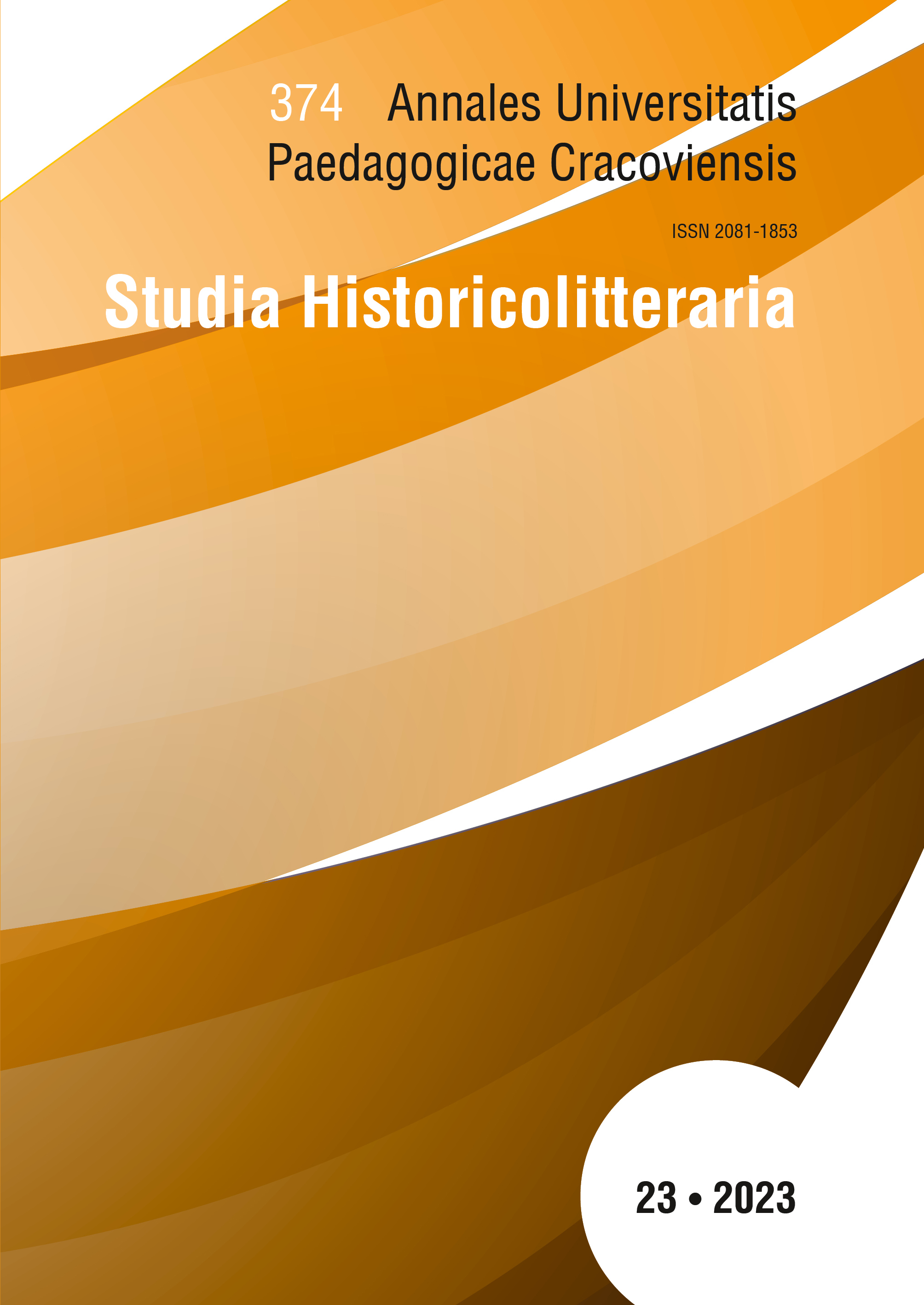Reinterpretacja poetyki węgierskiej powieści historycznej w utworach najnowszych
Main Article Content
Abstrakt
The main idea of the article is the description of selected works which belong to the latest Hungarian historical novels. They are surprising for readers and at the same time constitute a polemic with the genre classics. The best‑known historical novelists ate the turn of the 19th and 20th centuries in Hungary are: Géza Gárdonyi and Maurycy Jókai. One of the reasons for their popularity is the fact that in their works they mentioned well‑known and at the same time painful events from the history of Hungary. It was the era of Turkish rule and the period of theHungarian Spring of Nations. Other events included the Trianon case, which wasn’t discussed between 1945–1989, the Second World War, and the Hungarian October. The mythic image of national struggle and the fighting Hungarian, which was shaped by Romantic writers, was preserved for a long time in the collective memory of Hungarians. It seemed to have become an indispensable element of national mythology. However, new authors appeared in contemporary Hungarian culture, who made an attempt at the demythification of events that were important for the Hungarian people. Such an attempt seems very interesting and controversial. It is a litmus test for the current state of the collective historical awareness of the nation. New literary works take a different approach to those events which are well‑known to several generations of Hungarians from classical literature. They ask questions about the borders concerning rooted axiological categories and the flexibility of historical thinking. They are also an attempt at a timeless reflection connecting different periods. In Béla Fehér’s book, which was written in the spirit of magical realism, the most popular leader of the Hungarian Spring of Nations – Lajos Kossuth (1802–1894) – quotes the words of Prime Minister Imre Nagy (1896–1958) from the days of the Hungarian October. As for the works which deal with the topic of the two World Wars, they pose questions about the moral value of struggles run on the wrong side in the interest of foreign powers.
Downloads
Article Details

Utwór dostępny jest na licencji Creative Commons Uznanie autorstwa – Użycie niekomercyjne – Bez utworów zależnych 4.0 Międzynarodowe.
POLITYKA PRAW AUTORSKICH
Wydawca „Annales Universitatis Paedagogicae Cracoviensis. Studia Historicolitteraria” jest upoważniony do korzystania oraz do rozpowszechniana wszystkich opublikowanych w czasopiśmie materiałów na podstawie umowy licencji niewyłącznej, zawartej uprzednio na czas nieoznaczony każdorazowo z autorem/ką konkretnego utworu na określonych w tamtejszej umowie polach eksploatacji.
POLITYKA OTWARTEGO DOSTĘPU
„Annales Universitatis Paedagogicae Cracoviensis. Studia Historicolitteraria” to czasopismo o otwartym dostępie, a cała jego zawartość jest dostępna bezpłatnie dla użytkowników i instytucji na zasadach licencji niewyłącznej CreativeCommons (CC BY-NC-ND 4.0). Użytkownicy/ki mogą czytać, pobierać, wykonywać kopie, rozpowszechniać, drukować, wyszukiwać lub linkować do pełnych tekstów artykułów w tym czasopiśmie bez uprzedniej zgody wydawcy lub autora/ki pod warunkiem podania źródła dostępu i autorstwa danej publikacji. Jest to zgodne z definicją otwartego dostępu BOAI (http://www.soros.org/openaccess).
Bibliografia
A magyar irodalom történetei 1920-tól napjainkig, red. M. Szegedy‑Maszák, A. Veres, Budapest 2007.
Bujnicki T., „Ci i tamci. Powieść z czasów kampanii węgierskiej” [hasło], [w:] Literatura polska.Przewodnik encyklopedyczny, t. 1, red. C. Hernas, Warszawa 1984, s. 146–147.
Burszta M., Polak, Pepik, dwa bratanki (rec. filmu Operacja Dunaj), – Filmweb, https://www.filmweb.pl/reviews/recenzja-filmu-Operacja+Dunaj-8434 [dostęp: 14.09.2023].
Búzás G., Az Egri vár története – röviden, https://egrivar.hu/c/az-egri-var-tortenete-roviden [dostęp: 15.04.2023].
Dugonics András [hasło], Wikipédia, https://hu.wikipedia.org/wiki/Dugonics_Andr%C3%A1s [dostęp: 14.09.2023].
Grendel L., A modern magyar irodalom története. A magyar líra és epika a 20. században, Kalligram 2019.
Gyáni G., Történelem és regény: a történelmi regény, „Tiszatáj” 2004, 4. sz., s. 78–92.
Hankiss E., Társadalmi csapdák, Budapest 1997.
Imre L., Nagy M., S. Varga P., A magyar irodalom története 1849-től 1905-ig, Debrecen 2006.
Keresztesi J., Revizor – a kritikai portál, https://revizoronline.com [dostęp: 10.02.2023].
Magyar irodalom, red. T. Gintli, Budapest 2011.
Nagy L.K., „Ci i tamci” T.T. Jeża na tle innych utworów na temat polskich i węgierskich powstań narodowych, [w:] Polono – Hungarica 9. Irodalom – nyelvészet – történelem – kultúra, red. D. Dziewońska‑Kiss, A. Janiec‑Nyitrai, Z. Ráduly, Budapest 2016, s. 207– 217.
Nowak P., Ryszkiewicz M., „Kontrrewolucja – powstanie – kontrrewolucja”. Wydarzenia 1956 roku na Węgrzech w języku propagandy PRL (na materiale „Trybuny Ludu”), [w:] Tematy węgierskie, red. M. Woźniakiewicz‑Dziadosz, Lublin 1997, s. 95–113.
Sallai L., Nyögvenyelős road movie kétlóerővel, https://librarius.hu/2015/03/28/kossuthkifli-road-movie-ket-loerovel/ [dostęp: 11.02.2023].
Tükör által világosan. Horváth Viktor: Török tükör, 5.01.2014, Olvass bele, https://olvassbele.com/2014/01/05/tukor-altal-vilagosan-horvath-viktor-torok-tukor/ [dostęp: 12.04.2023].
Ungvári K., A kitörés alulnézetből, 11.02.2016, index, https://index.hu/tudomany/tortenelem/2016/02/11/ungvary_krisztian_a_kitores_alulnezetbol/ [dostęp: 12.04.2023].
